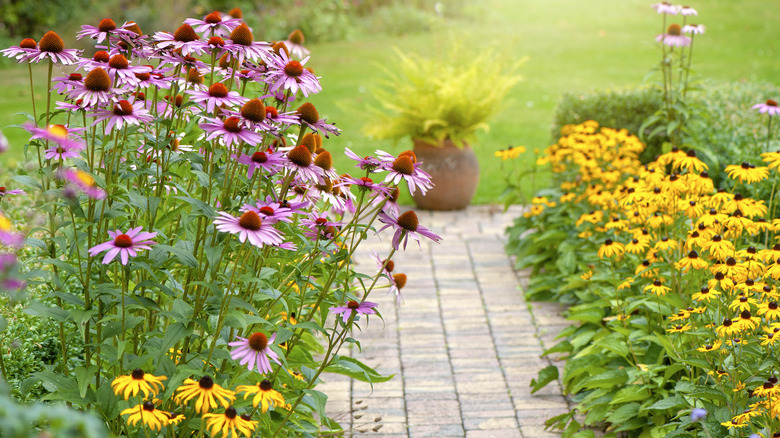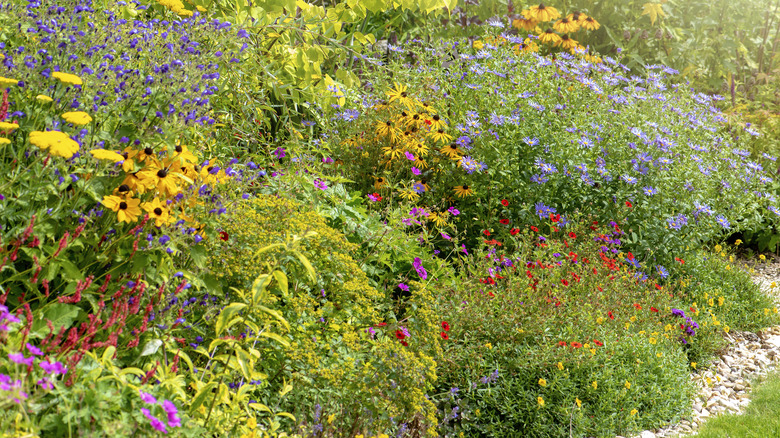Why Coneflower Seeds Are A Good Choice For Beginner Gardeners
As fun as it can be to purchase young plants and watch them grow and flower, nothing can beat the satisfaction that comes from starting your plants from seed. While annuals are generally the best flowers for beginner gardeners to grow from seed thanks to their rapid growth, there are certainly perennials that can be relatively easy as well, especially for gardeners with a bit of patience. Some of the best options for novice gardeners who want to dip their toes into perennials are beautiful North American native coneflowers because there are so many varieties available, they attract wildlife, and starting these seeds can be as simple as scattering them on the ground in the fall.
Coneflower is a broad term used to refer to many plants including echinacea, ratibida, and rudbeckia. All three are part of the larger Asteraceae family and have raised or cone-shaped centers surrounded by ray flowers that are colloquially referred to as petals. Native to North America, these distinctive flowers are adored for their colors, drought tolerance, and benefits to pollinators and other wildlife. Like most perennials, they often take time to mature, but with a little bit of time and attention, coneflowers can become garden stars by self-seeding and bringing a whimsical prairie beauty to your landscape. If patience isn't your strong suit, you can still grow coneflowers from seed, just opt for Rudbeckia hirta which often flowers in its first season, despite being a perennial.
Starting coneflowers from seeds
Because coneflowers are perennials and need to be able to survive the winter, it's important to pick varieties that are well suited for your zone. Luckily, most coneflowers are hardy in a wide range of climates, with purple coneflowers (Echinacea purpurea) hardy in zones 3 through 8 and orange coneflowers (Rudbeckia fulgida) hardy in zones 3 through 9. Coneflower seeds can be started indoors or direct sowed into well-draining loamy soil in a sunny location.
While you can start your coneflowers from seed during spring or summer, they benefit from seed stratification. This can be done in the refrigerator if you want, but direct sowing them in autumn is often the best and easiest option and should yield plenty of young seedlings the next spring. Coneflowers are also excellent candidates for the winter sowing method which is when seeds are planted in milk containers and left outside through the winter.
Using coneflowers in the garden
With the exception of the sweet coneflower (Rudbeckia subtomentosa) which prefers moist soil, most coneflowers are excellent options for drought tolerant pollinator and wildlife gardens. Combining different types of coneflowers in the garden is a popular and practical option as well, as they generally grow under similar conditions. The purples and yellows common in coneflowers also work together beautifully as they are complementary colors. Other drought tolerant, sun-loving plants like coreopsis and sedum can also be great additions.
Don't be too quick to cut back your coneflowers once winter arrives as not only will the seed heads provide excellent food for birds, but they may also self seed and help you expand your coneflower collection. If you prefer, you can also collect and save the seeds to plant out in your desired locations. Most coneflowers, like many other perennials, benefit from division every few years to prevent them from becoming overcrowded.


